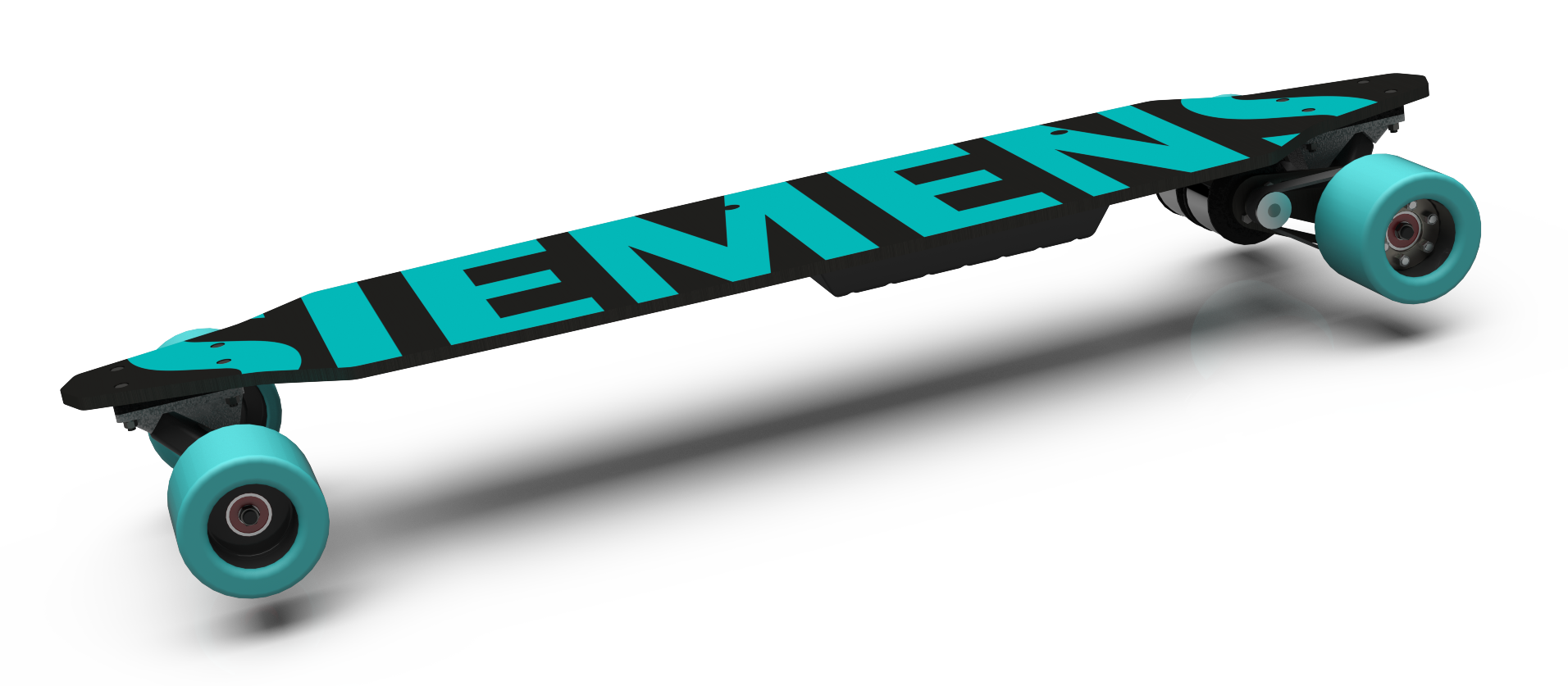A Holistic Model-Based Approach to Developing an Electric Longboard

21st century product development is by no means limited to a single discipline as the nature of complexity of the products is evolving exponentially. Moreover, the increasing realization of futuristic technologies like Artificial Intelligence and the Internet of Things over the past decade has resulted in a plethora of technological functionalities that can be offered within a product.
Remember that time when Batman could command the Batmobile to pick him up? It is not too far for this science fiction to become a reality and this is not the astonishing part of the story. Rather, the astonishing part is that you won’t have to be Batman or own a real Batmobile to experience this. Yes, self-driving cars are coming! But what does this imply? These cars would be made up of sophisticated mechatronic components coupled with embedded software running millions of lines of code per second and intelligent AI algorithms making decisions at the same time, all linked together in a highly complex fashion. This is just one example among the myriad of multi-domain products being manufactured in various industries.
Hence, it has become inevitable to have a holistic, multidisciplinary perspective while developing these products. We need to make a fundamental change in the way we design and manufacture products. And indeed, a fundamental change in the way we educate ourselves about it. Systems engineering is an interdisciplinary field of engineering and engineering management that focuses on designing and managing complex systems over their lifecycles. Model-Based Systems Engineering (MBSE) is a formalized approach to perform systems engineering activities with the use of computerized models.
Throughout my academic career, I have viewed technology as multidisciplinary, and the field of systems engineering really fascinates me as it complements my big-picture thinking. Working as a Global Academic Student Intern at Siemens PLM Software has been a unique experience. My job as an intern for the summer involved working with the subject-matter experts to develop a curriculum to demonstrate the MBSE approach in the context of Product Lifecycle Management that can be referred by universities around the world. This has allowed me to gain knowledge and understanding of concepts from various domains.
During the internship, I implemented the MBSE approach to develop an electric longboard using Siemens PLM Software suite. An electric longboard is a fairly complex system that includes mechanical and electrical/electronic subsystems. These subsystems interact continuously with each other in order to perform a certain function or functions that satisfy the system requirements. In order to deal with this complexity, I developed a eLongboard system model using Active Workspace Architecture Modeler. This system model acts as a single source of truth for product information across its entire life cycle containing RFLP data. RFLP stands for system requirements, functions, logical architecture and physical design. The system RFLP definition helps better understand the complete problem and allows to find innovative solutions. The figure below shows the eLongboard RFL definition in Active Workspace.

The RFL architectures provide a basis to a simulation engineer working in the same context, to model a physics-based simulation architecture that allows analyzing and monitoring the system performance under operating conditions and virtually validating the system performance requirements. This is also referred to as frontloading design decisions. Based on the RFL architectures, I analyzed the system performance using Simcenter Amesim (figure below) that helped me identify system specification like the size of the motors, battery and wheels.

After I got an initial idea about how the system performs in response to certain inputs, I could create the product structure in Teamcenter and specify and design the physical components in NX software. An interesting part here is that I could save my CAD product definition in Teamcenter and link it to the RFL artifacts which is a powerful feature when it comes to managing change and configuration of the product. This adds the physical aspect to the system model thereby making it the RFLP definition. We can call it the RFLP 3D definition. As a result of such linking, I could automatically validate the design requirements elicited in the system definition in Active Workspace from within NX. I then performed finite element analysis of the longboard deck using Simcenter 3D to automatically validate a component design requirement. We can perform multi-disciplinary optimization of the 3D geometry depending on the different subsystem requirements.

At this point, we have a tightly integrated Digital Twin of the electric longboard in place, that is built on a cross-domain data orchestration platform thereby creating a Digital Thread from the beginning of the development process. The RFLP artifacts have several interdependencies that enable anyone touching a physical design to understand the functions that each component or subsystem is intended to perform. The eLongboard design is now ready for virtual/physical prototyping and manufacturing. In a nutshell, the key aspect here is that the whole development process is driven by one master, the system definition in Teamcenter, enabling efficient traceability and collaboration between people from multiple domains developing the product concurrently. This is going to be a revolutionary way of realizing modern products. It is quite fascinating that Siemens PLM Software provides end-to-end digitalization solutions that will enable true realization of Industry 4.0. I feel fortunate to get such an opportunity at Siemens and I am excited about my next role as an MBSE intern.
If you’re interested to learn more, register to attend our upcoming webinar on Integrated MBSE.
About the blogger:
Shashank Alai is a graduate student at Purdue School of Engineering & Technology, IUPUI. He is pursuing his Master of Science in Mechanical Engineering degree with a concentration in Model-Based Systems Engineering. Before working as an intern at Siemens, Shashank interned at XPLM, where he applied concepts and techniques in the areas of MBSE and PLM. He is passionate about systems engineering and aspires to be a system thinker. In his spare time, he likes to read, watch political talk shows and take occasional road trips.



Comments